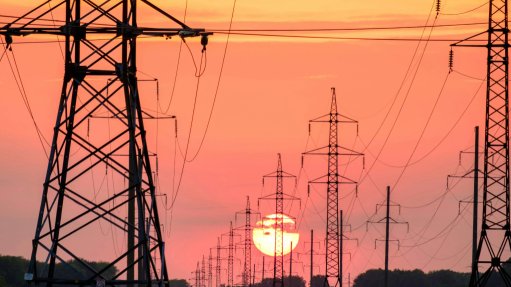The Concrete Institute highlights composite road benefits


BRYAN PERRIE South African roads are predominantly asphalt, and The Concrete Institute has been trying to make inroads for the use of concrete for roads
The benefits of concrete for roads can be exploited by the South African roads industry, says South African concrete education and skills organisation The Concrete Institute MD Bryan Perrie.
While concrete is generally more expensive in terms of initial costs, it does offer reduced life-cycle costs over the long term, particularly when compared with those of asphalt roads.
Considering the costs of road-user delays during the maintenance of asphalt roads, concrete offers a greater benefit in the long term, states Perrie.
Further, asphalt roads absorb more heat than concrete roads. “The areas surrounding asphalt roads are much warmer, owing to the heat absorption, therefore, air conditioning in buildings needs to be more effective, whereas if you had lighter-coloured concrete roads, less heat would be retained.”
However, Perrie states that the benefits of both concrete and asphalt can be exploited. “You can build a composite road in three ways – horizontally, vertically and longitudinally.”
Horizontally placing a composite road involves placing concrete in slow and climbing lanes, which is often the lanes which trucks would use, and asphalt in the faster lanes that light vehicles use.
Asphalt roads tend to rut with heavy and slow traffic flow, particularly on steep roads, this is not the case with concrete roads, says Perrie.
Vertically constructing a composite road consists of placing a concrete layer as the main structural element of a road with a long design life, with a thin layer of asphalt on top of the concrete.
“This will provide skid resistance and good riding quality – all you have to do is replace that 50 mm of asphalt every ten years. This can be done during traffic, at night and on weekends, whereas building a full concrete road would require road closure,” he states.
Longitudinally placing composite roads involves placing concrete on the steeper sections of road where the trucks are slower and rutting occurs and placing asphalt on the flatter portions of road.
Perrie stresses the importance of using such methods, particularly as differences in regions, such as climate and traffic levels, have a significant impact on the construction and maintenance of roads.
“If you look at life-cycle costs over a 40-year period, concrete will always win, especially considering the road-user delay costs. Up front though, it’s expensive, so it’s a challenge to justify,” he concludes.
Sustainability Challenges
Although very little is done to recycle concrete in South Africa, Perrie says it could be important for the country.
“Legislative processes, such as tender processes, present hurdles for recycling initiatives for concrete, as expensive costs for such recycling initiatives can result in companies deciding to dump their recyclable material illegally.”
Moreover, he notes that logistical and legislative challenges regarding recycling a building are also a problem.
“If you knock down a building and use what can be used in the new building on site, you don’t have to move the rubble and material to a new site,” he states, adding that the logistical challenges of removing materials from a demolition site to a dump and then importing new materials can result in more expensive costs. However, care needs to be taken to separate the different materials when demolishing a building to make it easier to recycle.
These logistical and legislative challenges can also hinder the use of alternative fuels and materials in cement kilns.
Materials, such as household and medical waste, can be used in kilns, but it becomes an expensive process for the collection and distribution of such waste, adds Perrie.
“Long distances can be a problem. Generally, cement plants are built where the primary raw material, limestone, is, and that’s not normally in urban areas. Any waste has to be collected and transported to the factories.”
The ability of cement kilns to deal with varying types of alternative fuels also becomes a challenge, as there needs to be a steady supply of a consistent fuel for this to be fully viable.
Article Enquiry
Email Article
Save Article
Feedback
To advertise email advertising@creamermedia.co.za or click here
Comments
Press Office
Announcements
What's On
Subscribe to improve your user experience...
Option 1 (equivalent of R125 a month):
Receive a weekly copy of Creamer Media's Engineering News & Mining Weekly magazine
(print copy for those in South Africa and e-magazine for those outside of South Africa)
Receive daily email newsletters
Access to full search results
Access archive of magazine back copies
Access to Projects in Progress
Access to ONE Research Report of your choice in PDF format
Option 2 (equivalent of R375 a month):
All benefits from Option 1
PLUS
Access to Creamer Media's Research Channel Africa for ALL Research Reports, in PDF format, on various industrial and mining sectors
including Electricity; Water; Energy Transition; Hydrogen; Roads, Rail and Ports; Coal; Gold; Platinum; Battery Metals; etc.
Already a subscriber?
Forgotten your password?
Receive weekly copy of Creamer Media's Engineering News & Mining Weekly magazine (print copy for those in South Africa and e-magazine for those outside of South Africa)
➕
Recieve daily email newsletters
➕
Access to full search results
➕
Access archive of magazine back copies
➕
Access to Projects in Progress
➕
Access to ONE Research Report of your choice in PDF format
RESEARCH CHANNEL AFRICA
R4500 (equivalent of R375 a month)
SUBSCRIBEAll benefits from Option 1
➕
Access to Creamer Media's Research Channel Africa for ALL Research Reports on various industrial and mining sectors, in PDF format, including on:
Electricity
➕
Water
➕
Energy Transition
➕
Hydrogen
➕
Roads, Rail and Ports
➕
Coal
➕
Gold
➕
Platinum
➕
Battery Metals
➕
etc.
Receive all benefits from Option 1 or Option 2 delivered to numerous people at your company
➕
Multiple User names and Passwords for simultaneous log-ins
➕
Intranet integration access to all in your organisation



















